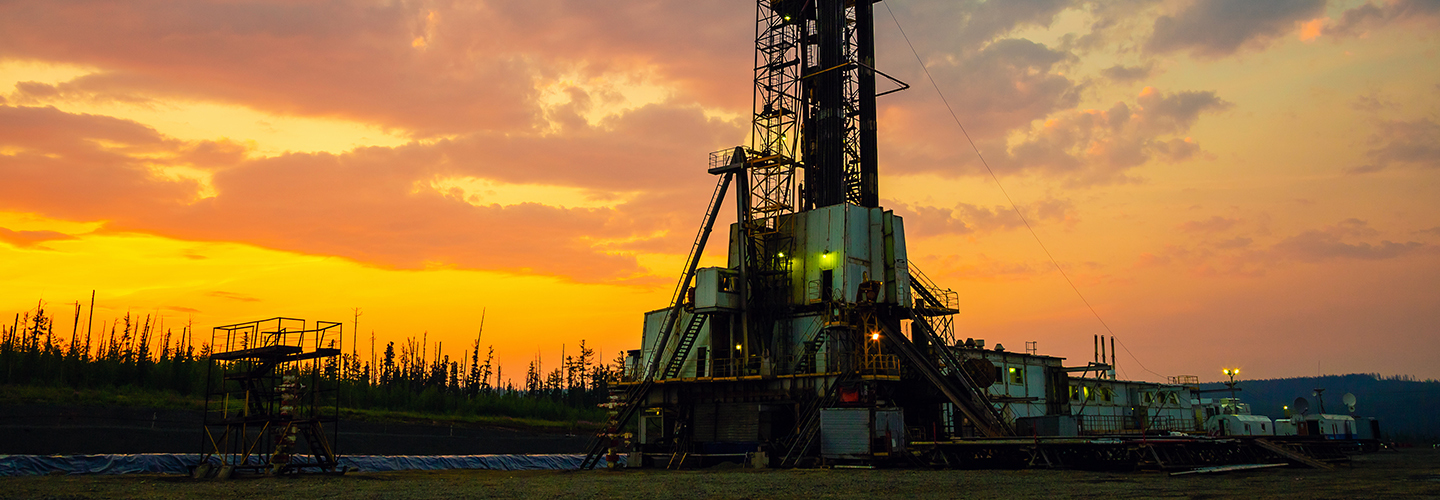
We provide investment banking, research, sales and trading, asset and wealth management, public finance, insurance, private capital, and family office services.
We are a family-owned financial services firm that values client relationships, long-term stability, and supporting the communities where we live and work.
The idea of family defines our culture, because each of us knows that our reputation is on the line as if our own name was on the door.
Our reputation as a leading independent financial services firm is built on the stability of our longstanding and highly experienced senior executives.
We are committed to corporate philanthropy; economic and financial literacy advocacy; and diversity, equity, and inclusion initiatives.
Stephens is proud to sponsor the PGA TOUR, LPGA Tour, and PGA TOUR Champions careers, as well as applaud the philanthropic endeavors, of our Brand Ambassadors.
We host many highly informative meetings each year with clients, industry decision makers, and thought leaders across the U.S. and in Europe.
We provide fiduciary investment strategies to public-and private-sector institutional clients through asset allocation, consulting, and retirement services.
Decades of proven performance and experience in providing tailored fixed income trading and underwriting services to major municipal and corporate issuers.
Proven industry-leading research, global market insights, and client-focused execution.
Customized risk management, property & casualty, executive strategies and employee benefits solutions that protect our clients over the long term.
We assist companies with accessing capital through innovative advisory and execution services that help firms achieve their strategic goals.
We have been a trusted and reliable source of capital for private companies for over 70 years.
Our experienced Private Client Group professionals develop customized investment strategies to help clients achieve their financial goals.
We are a trusted municipal advisor with proven expertise in public financings. We also work with clients in negotiated and competitive municipal underwritings.

Nissa Darbonne, Editor-at-Large for Oil and Gas Investor, recently hosted the Stephens Investment Banking Energy Mid-Year Webinar. This is the latest entry in a series of thought leadership webinars by Stephens, which spotlight major banking developments in energy markets and look ahead to trends that may shape the sector in the months and years to come. This latest entry focused on the big picture for energy-related investment banking as well as how recovery from the pandemic factors into deal activity. Darbonne spoke with:
The panel discussed the environment for A&D transactions, legal and regulatory concerns, private equity, equity capital markets, credit markets, as well as macro energy supply and demand issues that may affect dealmaking into 2022. Here are highlights from the webinar.
The energy sector had a strong first half of the year, with companies in the space delivering the best six-month performance across the S&P 500.¹ By the end of June, West Texas Intermediate (WTI) crude oil prices had broken above $73 per barrel, up 55% from Jan. 1, according to data from the Federal Reserve Bank of St. Louis,² as Henry Hub natural gas prices rose 46% according to the U.S. Energy Information Administration (EIA).³
More than $29 billion in corporate upstream M&A deals occurred in the first half of 2021, with volume up approximately 3,295% compared with January through June of last year and A&D volume up 148% during that time, according to data from Enverus. Upstream high-yield offerings were up approximately 172% according to S&P Global Market Intelligence, with upstream public equity offerings up 79% according to Enverus and FactSet. Investment banks have recorded a strong uptick in transaction volume, and the second half of 2021 likely will focus on closing those deals.
Deal activity began ramping up in the middle of the second quarter, and this has continued into the start of the third quarter. The rebound is in contrast to the near standstill that prevailed in 2020, when the bulk of deal activity was either forced selling or a few opportunistic M&A and A&D transactions that were indicative of abnormal conditions.
Not only was COVID-19 spreading in the absence of vaccines — severely limiting both travelrelated and commercial real estate energy consumption — but OPEC and Russia were engaged in heavy posturing over production levels. To be sure, the first half of 2021 concluded with OPEC and a Russia-led faction of oil producers deadlocked on how to address the rapidly rising global demand for energy.
Even as the price of WTI remained poised to rise further this year, private equity and public company dealmakers seeking to close transactions have had to navigate potential legal and regulatory ramifications stemming from environmental, governmental and social (ESG) priorities – as well as a growing proportion of investors that support such measures, according to Holt Foster of Sidley.
In a widely anticipated set of moves, the Biden administration has advocated a carbon neutral footprint and implemented a moratorium on drilling in federal lands. The executive order on federal land leases resulted in state-by-state differences that were challenged in court, and may require legislation that has not yet gathered sufficient Democratic support to pass, according to Foster. Democrats from Delaware and California also have proposed a federal carbon tax.
In addition, companies active in the energy sector are reviewing potential state-level decisions on fracking, environmental protection, and bankruptcy, according to Foster. For example, a recent offshore-related legal case in Texas involved a company going through a second bankruptcy after being unable to pay plugging and abandoning (P&A) insurance.4
The bankruptcy court decided that the firm could shed its P&A obligations, despite the state’s chain of title liability laws. This raises questions about whether sellers must establish letters of credit and escrow accounts during M&A transactions in states such as Texas and Louisiana, or if sellers only would need to take such steps in very similar instances as those leading up to the bankruptcy case, according to Foster.
Deal valuations have shifted starkly since last year. Collapsing commodity prices that briefly featured WTI dropping to -$36.98 on April 20, 2020, gave scant incentive for producers to drill. Furthermore, many energy investment firms focusing on distressed assets saw virtually no upside value ascribed to paying for the right to drill in the future, according to data from Pontem Energy Capital.
Whereas in 2019, approximately 15% of the aggregate value of A&D transactions was ascribed to the upside and 85% was ascribed to proved developed producing (PDP) operations with cash flow, in 2020 approximately 10% of aggregate A&D transaction value was ascribed to the upside and 90% was purely focused on PDP, according to Pontem Energy Capital.
During the second and third quarters of 2020, PDP-focused deals traded at approximately a PV15 annual rate for discounting estimated future oil and gas revenues, while undeveloped assets were valued at approximately $10,000 per acre. By late March 2021, some investment firms were willing to pay approximately 80% on PDP at PV12 or lower, 20% on upside, and over $40,000 per acre for undeveloped assets, according to Pontem Energy Capital.
By the end of June, nearly 50% of aggregate A&D transaction value was ascribed to the upside and PDP-focused deals traded at almost PV8, with undeveloped assets garnering approximately $70,000 per acre. This demonstrates how rising oil prices can create exponential increases in upside value, according to Pontem Energy Capital.
Prior to the onset of COVID-19, private equity firms had focused on having fewer management teams as well as lowering general and administrative (G&A) overhead, in attempts to maximize efficiency and achieve scale. This led to a significant amount of consolidation that persisted for nearly two years through June, and may have all but run its course.
Now, rather than consolidating, many private-equity backed businesses have been seeking to sell parts of their portfolio. If oil prices stabilize, this may increasingly include underperforming assets. Two major catalysts are higher energy prices, and limited partners demanding returns on investments that have been held for longer than desirable.
Some PE firms concerned with their long-term viability view selling holdings as necessary in order to have a successful closing on their next fund and raise adequate capital for future projects. PE firms are being more selective about acquisitions, often preferring the core of basins, and seeking out highly experienced management teams. The advent of ESG also appears to be influencing decision-making.
On one end of the spectrum, ESG is prompting certain traditional oil and gas investors to exit the market by liquidating their hydrocarbon assets and focusing on other industries. On the opposite end, other investors perceive increasing hydrocarbon demand and lack of supply over the next couple of years as a huge opportunity. Between the two extremes is a growing number of private equity firms that remain long on crude oil, with heightened interest in natural gas since it is seen as the cleaner fossil fuel, while expanding into renewable energy sources.
Firms making that transition from carbon to carbon and renewables have been known to use special purpose acquisition companies. Yet only a few SPACs are seeking to take energy firms public in the near-term. This may in part be due to the Biden administration indicating SPACs will face greater scrutiny on disclosures and perceived similarities to initial public offerings. Nevertheless, energy firms appear poised to experience stronger equity capital markets activity than the handful of natural gas focused IPOs that unfolded during the previous five quarters.
On the credit front, over the course of 2020, the number of reserve based lending (RBL) providers fell drastically as banks exited the space. During the first quarter of 2021, a slight uptick in RBLs did occur along with rising commodity prices. Active providers have tightened requirements on production and cash flow, covenants, allowable kinds of leverage and other metrics. Buyers, meanwhile, are seeking capital from additional sources.
Aside from RBLs, a popular structure is volumetric production payments (VPPs). While VPPs are more expensive than bank financing, they can offer attractive costs, higher advances, and no restrictions on how firms use proceeds – which allows them to pay distributions back to owners. Unitranche debt is another popular structure, albeit with a higher cost of capital than VPPs. Still less common are asset-level “DrillCo” arrangements where backers supply operators with cash tranches and investors receive shares of wellbore interests.
Finally, securitization of reserves is a source of capital that could gain traction among large energy firms, if sector economics continue to improve. Previous securitization deals have mainly been available to operators of conventional reservoirs. Although various hurdles still exist, in the near future unconventional shale operators capable of attaining investment grade credit ratings may gain access to securitizations.
Despite the consumer price index increasing 5.4% in the 12-month-period through June, with energy commodities rising 44.2% during that time, according to the U.S. Bureau of Labor Statistics, inflation barely factored into energy-related deal conversations in the first half of 2021.5 It is possible that a post-pandemic global economic recovery will spur energy demand that sends crude oil gradually rising to $85 per barrel and beyond in 2022.
Under that scenario, the potential for increased inflation is not seen as a significant risk to M&A and A&D deal activity, nor to equity or debt capital raising, since the cost of capital could lower in the energy sector. One possible constraint may be difficulties at energy services firms with finding and retaining enough qualified workers to keep pace with production. Between June 2020 and June 2021, the U.S. rig count soared from 263 to 475, according to Baker Hughes.6
Of course the other crucial concerns have been the spread of the Delta variant, COVID-19 infections among fully vaccinated individuals, and recent guidance from the U.S. Centers for Disease Control and Prevention (CDC) that vaccinated people should return to wearing masks indoors when visiting high- Transmission areas. These events could hinder optimism somewhat, and therefore slow momentum for a recovery.
However, even a resurgence of the pandemic likely would not generate the same level of shock as the March 2020 onset. Consumers and workers largely have become accustomed to health and safety precautions such as wearing masks and social distancing. As a result, economic activity remains on track to continue upward, and demand for crude oil may well consistently exceed pre-pandemic levels by the second half of next year.
¹ https://www.spglobal.com/spdji..., as of July 1, 2021.
² U.S. Energy Information Administration, Crude Oil Prices: West Texas Intermediate (WTI) - Cushing, Oklahoma [DCOILWTICO], retrieved from FRED, Federal Reserve Bank of St. Louis; https://fred.stlouisfed.org/se...,
August 5, 2021.
3 https://www.eia.gov/dnav/ng/hi...
4 https://cases.primeclerk.com/f...
5 https://www.bls.gov/news.relea...
6 https://rigcount.bakerhughes.c...
This article has been prepared solely for informative purposes as of its stated date and is not a solicitation, a recommendation or an offer, to buy or sell any security. It does not purport to be a complete description of the assets, properties, securities, markets or developments referred to in the article. Information in the article was obtained from sources considered to be reliable, but has not been independently verified or confirmed. The views and opinions
expressed in the article are those of the author. Any expressions of opinion speak only as of the date of preparation of the article, do not necessarily reflect the opinions of any other person or entity, and are subject to change without notice. No subsequent publication or distribution of this article shall mean or imply that any such information or opinion remains current at any time after such date of preparation.
“Stephens” (the company brand name) is a leading family-owned investment firm comprising the businesses of investment banking, advisory, sales and trading, research, insurance and wealth management. Founded in 1933, Stephens’ US operations are headquartered in Little Rock, AR, with additional locations in strategic domestic markets and a European presence in England and Germany. Stephens is committed to building long-term value for corporations, state and local governments, financial institutions, and institutional and individual investors. Stephens’ affiliates include: Stephens Inc. (offers securities products; member NYSE SIPC), Stephens Investment Management Group, LLC, Stephens Insurance, LLC, Stephens Capital Partners LLC, and Stephens Europe Limited. For more information, visit www.stephens.com. © 2021 Stephens.
Stephens Inc. (Home Office: 111 Center Street, Little Rock, AR USA, 501-377-2000) is regulated by the United States Securities and Exchange Commission and the Financial Industry Regulatory Authority and Stephens Europe Limited (Registered office: 12 Arthur Street, London, EC4R 9AB, Registered number 8817024) is authorised and regulated by the Financial Conduct Authority.

